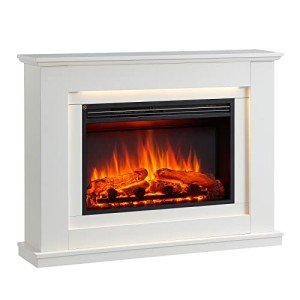Where To Research Fireplace Online
페이지 정보
작성자 Christy 작성일25-07-26 08:14 조회3회 댓글0건본문

The Fireplace: A Warm Embrace of Tradition and Comfort
Fireplaces have actually been an important part of human habitation for centuries, functioning as a source of warmth, a meeting place, and a sign of comfort. While the modern versions might differ extremely from their ancient forefathers, the attraction of a fireplace withstands. This post explores the various aspects of fireplaces, including their history, function, types, and maintenance, while likewise resolving regularly asked questions.
The Evolution of Fireplaces
Fireplaces date back to ancient times when open flames were utilized for cooking, heating, and security from wildlife. Over the centuries, fireplaces progressed from simple fire pits to the advanced renditions we see today. Here is a quick timeline of their advancement:
- Prehistoric Era: Cavemen utilized open flames for warmth and cooking. Wind and smoke typically blew into homes.
- Middle Ages: Stone and brick fireplaces became typical in homes and castles, incorporating chimneys to carry smoke outside.
- Renaissance: Elaborately developed mantels emerged, and fireplaces became centers of social interaction.
- Industrial Revolution: Innovations in heating products caused a range of designs and performances.
- Modern Era: The arrival of natural gas, electric, and bioethanol fireplaces supplied cleaner options to traditional wood-burning units.
Table 1: The Evolution of Fireplaces
| Period | Characteristics |
|---|---|
| Ancient Era | Open flames for heat and cooking |
| Middle Ages | Stone and brick structures with early chimneys |
| Renaissance | Ornate mantels, social centers |
| Industrial Revolution | Diverse styles, advent of new products |
| Modern Era | Gas, electric, and bioethanol options |
The Purpose of a Fireplace
Fireplaces serve dual functions: they supply physical heat and produce an emotional environment. Homeowners typically gather around the fireplace to bond, share stories, and enjoy a cozy setting. The glow of a fire can be relaxing, adding to a sense of relaxation and intimacy. Beyond individual enjoyment, fireplaces likewise provide practical advantages, including:
- Home Heating: Effective heat source, particularly in colder environments.
- Increased Home Value: A well-designed fireplace can enhance the visual worth of a home.
- Emergency Heating: In case of power blackouts, wood-burning fireplaces can serve as a vital heat source.
- Visual Appeal: A focal point that contributes to interior decor.
Kinds of Fireplaces
Today, fireplaces come in various styles and fuel types, accommodating a diverse variety of preferences and settings. Here are some common types:
Wood-Burning Fireplaces:
- Traditional fire pits
- Classic masonry fireplaces
- Require significant upkeep and chimney upkeep
Gas Fireplaces:
- Available in both direct vent and ventless varieties
- Much easier to utilize and maintain than wood-burning fireplaces
- Offer instantaneous heat with a flick of a switch
Electric Fireplaces:
- Offer associated heat sources without genuine flames
- Often developed to imitate traditional fireplaces
- Suitable for smaller sized areas and homes without a chimney
Bioethanol Fireplaces:
- Use bioethanol fuel, offering a sustainable option
- Require no ventilation and can be positioned anywhere
- Safe and easy to keep
Table 2: Types of Fireplaces
| Type | Fuel Source | Features | Upkeep Requirements |
|---|---|---|---|
| Wood-Burning | Wood | High atmosphere, heat source | Regular chimney cleansing |
| Gas | Gas or lp | Instant heat | Minimal, periodic maintenance |
| Electric | Electrical power | Easy setup | Extremely low upkeep |
| Bioethanol | Bioethanol fuel | Ventless, portable | Low, primarily cleaning up |
Upkeep and Safety Considerations
Owning a fireplace includes particular responsibilities, specifically regarding its safe operation and long-lasting maintenance. Here are essential upkeep pointers and security standards:
Maintenance Tips:
- Annual Inspection: Always have your chimney and fireplace checked at least when a year by a certified professional.
- Routine Cleaning: Clean out ashes and particles after each usage, and ensure the flue is open before beginning a fire.
- Check for Cracks: Inspect masonry for cracks or damage to prevent structural concerns.
- Use Proper Fuel: Only usage dry, seasoned wood for wood-burning fireplaces; do not burn cured wood.
Security Guidelines:
- Install Smoke Detectors: Ensure smoke alarm are functional, evaluating them monthly and replacing batteries as required.
- Keep a Fire Extinguisher: Have one close-by, even if a fireplace online is used occasionally.
- Monitor Flames: Never leave a fire ignored, and ensure children and pets are monitored around the fireplace.
Often Asked Questions (FAQs)
1. How can I lower smoke from a wood-burning fireplace?
To lessen smoke, usage dry, seasoned wood, and guarantee that your chimney is tidy and unobstructed.
2. Is it safe to utilize gas fireplaces throughout a gas leak?
Never use a gas fireplace during a gas leak. Right away leave the area and contact gas services for help.
3. Can I set up an electric fireplace myself?
Electric fireplaces are normally simple to set up, but it is suggested to speak with professionals to ensure safety and compliance with local building regulations.

4. What is the very best type of fireplace for small areas?
Electric fireplaces or bioethanol designs are frequently best for small spaces, as they do not need comprehensive ventilation or structural modifications.
Fireplaces have actually transcended their original function of providing heat to end up being valued aspects of home style and family life. They evoke memories of warmth, events, and togetherness while supplying functional benefits that boost modern living. By understanding the different kinds of fireplaces, their upkeep, and safety practices, property owners can take pleasure in the timeless appeal of this beloved feature for generations to come.
댓글목록
등록된 댓글이 없습니다.




















